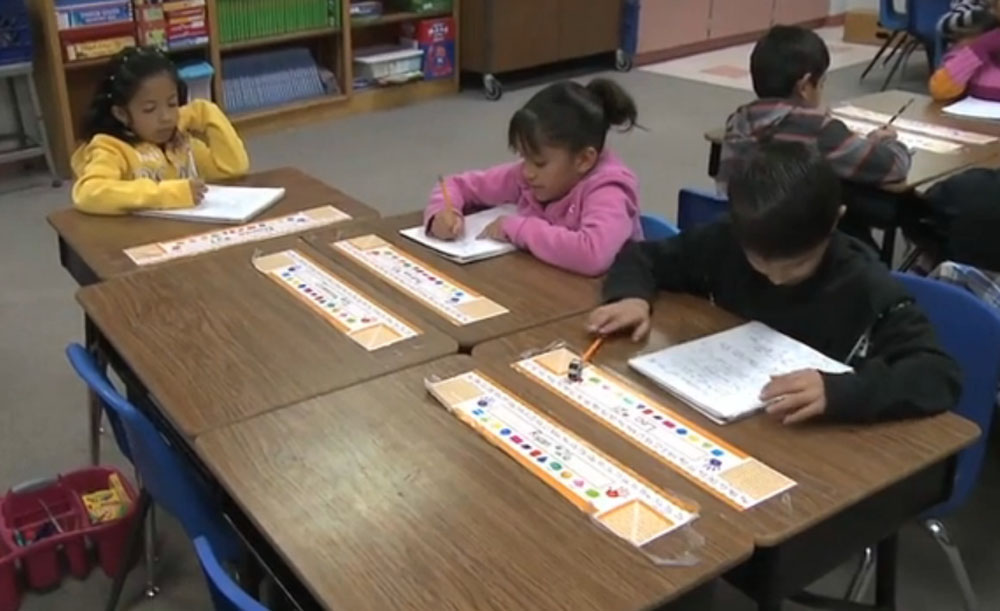Cronkite News has moved to a new home at cronkitenews.azpbs.org. Use this site to search archives from 2011 to May 2015. You can search the new site for current stories.
Third-graders face new toughened reading standard this fall
Editor’s Note: A previous version of this story misidentified Cindy Daniels. She is the director of K-3 Reading/Move On When Reading for the Arizona State Board of Education.The story below has been updated to reflect the correct affiliation. Clients who used the story are asked to run the correction that can be found here.
WASHINGTON – Arizona children entering third grade this year are the first who will have to prove that they can read at an acceptable level or face being held back.
The Arizona Department of Education estimates that the law taking effect this fall will force about 1,500 children to repeat third grade next year. Another 17,000 third graders are at risk of being held back under the new rule, said Pearl Chang Esau, president of Expect More Arizona.
The state has spent millions helping schools gear up for Move On When Reading, which was approved by state lawmakers in 2010 to make sure that children are proficient at reading at the “critical milestone” of third grade.
“We see that third grade is a very important turning point in which if students are reading proficiently they are more likely to be successful,” Chang Esau said.
Third grade is the last year when children are “learning how to read,” said Cindy Daniels, director of K-3 Reading/Move On When Reading for the Arizona State Board of Education. In fourth grade, she said, the curriculum “flips and you’re reading to learn.”
Arizona is one of 15 states and the District of Columbia that has passed reading-retention measures for third graders, according to the Education Commission of the States.
The new law requires that any third-grader whose reading score “falls far below the third-grade level” on Arizona’s Instrument to Measure Standards (AIMS) test be held back for one year.
Schools must offer strategies to help improve the reading of those children who are held back, offering them additional reading time during the school year or online or summer classes, for example.
There were 84,000 second-graders in the state last year. The new law would apply to most of those incoming third-graders, but it exempts children who are mentally disabled and some English-language learners.
A key feature of the Arizona law is that schools are expected to use state test scores to identify children at risk of falling behind before they reach third grade.
“When I put my head on the pillow at night I don’t want a third grader to be retained,” said Daniels.
To help educators make the transition, the state gave $40 million a year in 2012 and 2013 to local school districts. Daniels said school officials have been “ecstatic” about the funding, which has been used on a variety of resources, from hiring reading coaches to buying more books.
Each district must submit an annual literacy plan to the state board to get the funding.
Chang Esau called the funding an “important start,” but pointed to the 1,500 third graders who are still expected to be held back this year.
“That’s just far too many,” she said.
Chang Esau hopes that the state will continue funding for third-grade reading in the future or, better yet, increase the amount.
“We definitely need more resources if we are going to be serious about ensuring that all of our students are reading proficiently by third grade,” she said.
Daniels, a former principal and reading teacher, said that while teachers are under increased pressure this year to raise literacy levels, she feels that the two-year transition period has helped them prepare.
“I really feel that we are on a very solid foundation and ready for this,” she said.
It is unclear at this point what will happen when the AIMS test is phased out in 2015 for the Partnership for Assessment of Readiness for College and Careers.
“At this moment the law stands as is . . . but there’s still dialogue that has to take place” with officials in charge of implementing the test, Daniels said.
But for now, Daniels is focused on helping teachers adopt the new law.
“Hopefully they (teachers) will feel supported by us and call me at any time,” said Daniels, who has been traveling to schools around Arizona. “We would do anything possible to help them through this. I’m a party of one but I’m passionate.”








